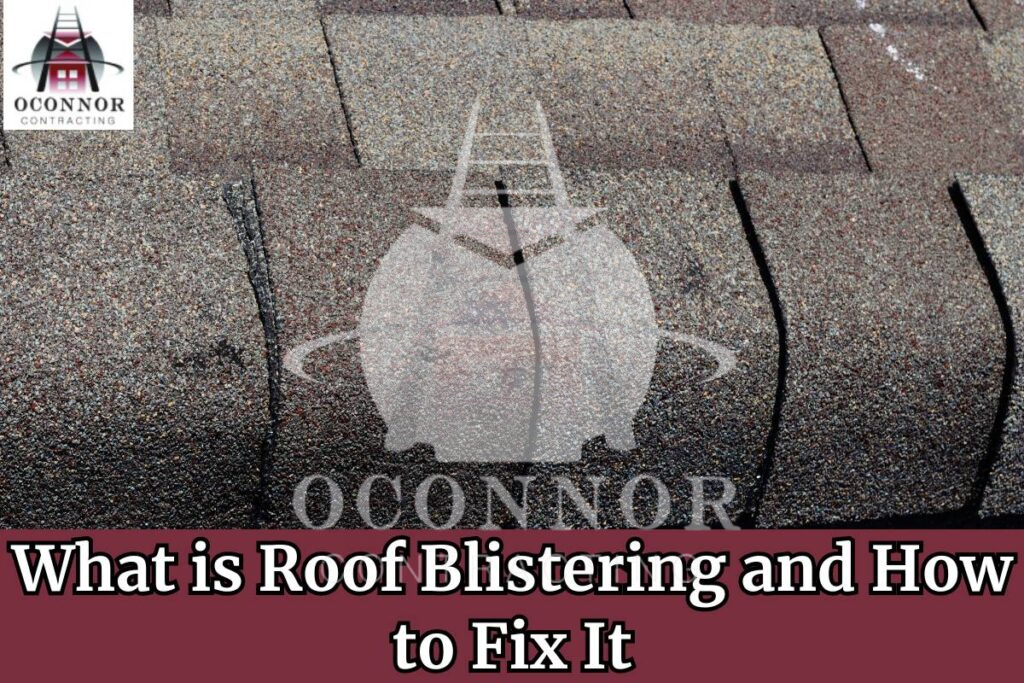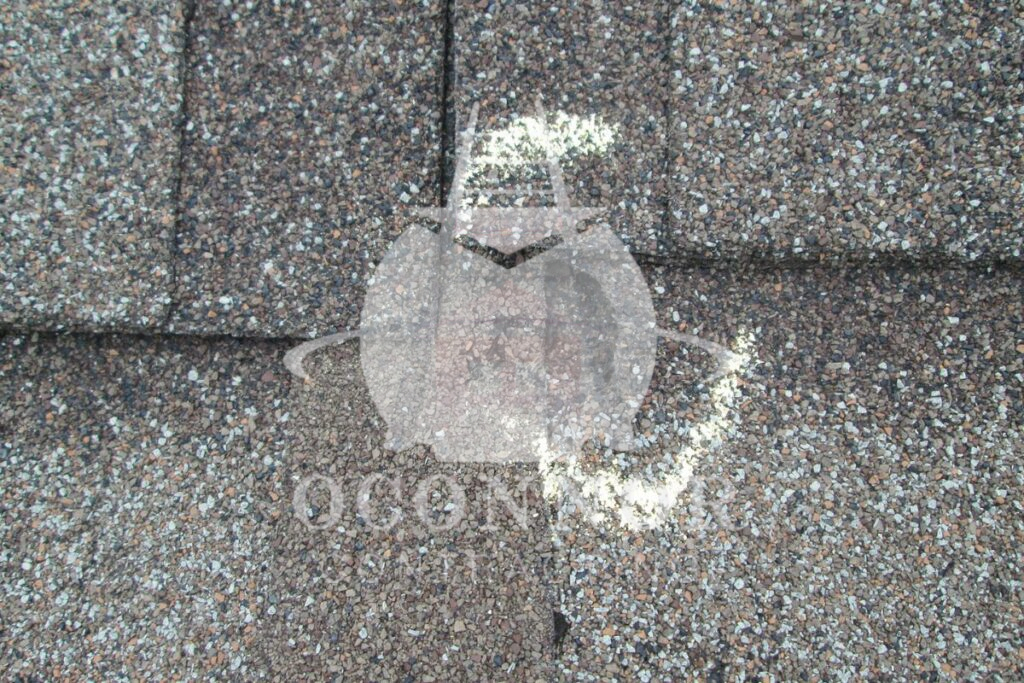
Imagine waking up one day to find your roof covered in ugly bubbles and raised patches. Though this might appear to be a small cosmetic problem, these symptoms could point to a much more serious issue: roof blistering. Most of the time, homeowners ignore this until it becomes a serious and expensive problem.
To help you out, this blog post examines the reasons behind roof blistering, how to identify it, and—above all—effective ways to remedy it to protect the structural integrity of your home.
What Is Roof Blistering?
Roof blistering is a common problem seen in membrane, shingle, and flat roofs. These raised bubble-like protrusions filled with moisture or trapped air indicate weakened adhesion between roofing materials and the substrate.
These blisters come in various sizes, ranging from small bumps to significant bubbles, with larger ones posing a serious risk by causing material separation, leaks, and structural damage. Blistering often results from different factors, such as improper installation, insufficient surface preparation, extreme temperatures, and moisture accumulation.
To avoid roof blisters and maintain the longevity and effectiveness of the roofing system, regular inspections and timely repairs are crucial.

How Can I Identify Roof Blistering?
Roof blistering appears as raised, bubble-shaped patches on the roof. The following are the main characteristics of roof blistering:
- Raised Patches: Blisters show up as raised patches on shingles, often filled with asphalt, water, gravel, and rust particles.
- Water Spots: Ceilings and walls with water spots may indicate roof leaks from blistering or other issue.
- Increased Energy Cost: Blistering can affect insulation, leading to higher heating and cooling bills.
- Light in the Attic: Light shining through the roof deck into the attic can signal roof damage from blistering or other causes.
- Moss Growth: Moss on the roof surface suggests trapped moisture and potential blistering.
- Discoloration or Bumps: Early signs of blistering include shingle discoloration or slight bumps.
How to Fix Roof Blistering
When dealing with roof blistering, it’s important to address the issue as soon as possible to prevent further damage. Here is how to fix roof blistering:
Assess the Damage
- Inspect the Roof: Begin by visually examining the roof to identify areas where blistering has occurred.
- Determine the Cause: Understand the underlying cause of the blistering, which could be due to trapped moisture, poor ventilation, or improper installation.
Prepare for the Repairs
- Safety First: Before starting with any repair work, make sure you have the necessary safety equipment, such as gloves, goggles, and a stable ladder.
- Gather Materials: Collect the materials needed for the repair, including roofing cement, a putty knife, roofing nails, and a hammer.
Repair Process
- Clean the Area: Remove any debris or loose materials around the blistered area using a broom or brush.
- Cut and Lift: Carefully cut out an “X” shape over the blister by using a utility knife and lift the edges of the blister to allow for proper drying.
- Dry the Area: Let the exposed area dry completely to ensure there is no moisture trapped underneath.
- Apply Roofing Cement: Using a putty knife, apply roofing cement under the lifted edges and press them back down firmly.
- Seal the Blister: Apply a generous amount of roofing cement over the repaired area to seal it completely.
- Smooth Out: Smooth out the repaired area to ensure it blends elegantly and seamlessly with the rest of the roof.
Final Checks
- Inspect the Repair: Once the repair is complete, inspect the area to ensure the blister has been properly sealed and there are no signs of further damage.
- Monitor: Keep an eye on the repaired area over time to ensure the blistering does not reoccur.
How To Prevent The Formation of Roof Blisters
1. Regular Roof Inspections:
Schedule inspections regularly to identify potential issues before they become major problems. Check for signs of blistering, such as bubbles or raised areas on the roof surface.
2. Scheduled Maintenance:
Along with regular inspections also schedule regular maintenance like cleaning to prevent minor issues from turning into significant problems.
3. High-Quality Materials:
Use high-quality roofing materials to reduce the risk of blistering. These materials are less prone to manufacturing defects and will perform better over time.
4. Proper Attic Ventilation:
Ensure your attic is well-ventilated to prevent heat buildup. Install vents on the ridge and eaves of your roof. Proper ventilation reduces the risk of blistering by preventing heat from getting trapped and causing the roofing materials to expand and contract.
5. Dry Roof:
Keep your roof dry by using a high-quality underlayment and store roofing materials in dry conditions to prevent moisture from getting trapped and causing blistering.
6. Proper Drainage:
Ensure your roof has an efficient drainage system to prevent water accumulation, which can cause blistering. This includes cleaning gutters and downspouts regularly.
7. Avoid Extreme Temperatures:
Reduce the risk of blistering by avoiding extreme temperatures, such as direct sunlight, by providing shade or using reflective roofing materials.
Can Roof Blistering Be A Sign Of Other Roofing Problems?
Yes, roof blistering can indicate other roofing problems. While not always dangerous by itself, it often points to underlying issues needing attention to prevent serious damage.
Some common causes of roof blistering include:
1. Poor Installation:
Improper adhesive application or insufficient drying time can compromise structural integrity and cause leaks.
2. Moisture Accumulation:
Moisture buildup beneath coatings or shingles can signal leaks, poor drainage, or trapped condensation, which can lead to further damage if not resolved.
3. Temperature Fluctuations:
Extreme temperature changes stress roofing materials, potentially leading to further damage.
4. Substrate Issues:
Uneven surfaces or debris in the substrate can weaken the roof and cause blistering.
5. Manufacturing Defects:
Defective materials, such as incorrectly placed granules, can cause blistering and indicate broader quality issues.
6. Poor Ventilation:
Inadequate attic ventilation can cause excessive heat buildup, damaging roofing materials and shortening the roof’s lifespan.
7. Leaks:
Blisters can signify leaks, leading to more major water damage with structural issues if not addressed.
8. Age and Wear:
Blisters can occur naturally as roofs age, but widespread blistering may indicate the need for replacement or extensive repairs.
How Much Does It Cost To Repair Roof Blistering?
The cost of treating roof blistering fluctuates based on how big and how severe the issue is. Fixing a burst roof blister usually costs between $100 and $1,000 per blister, for an approximate total of $550. But in the end, your roof’s quality, design complexity, location, and the skill of the person you hire to repair it all affect how much it will cost.
What Is The Difference Between Roof Blistering vs. Hail Damage?
Roof blistering and hail damage differ in causes and appearance. Blistering stems from trapped moisture, poor ventilation, or manufacturing defects, leading to raised, irregular bumps on shingles.
Hail damage, however, results from hailstones hitting the roof, leaving circular or oval-shaped dents and missing granules. Hail damage typically follows a pattern based on wind direction, while blistering appears more randomly.
As a homeowner, accurately identifying the damage type is vital for selecting the right repair approach and potential insurance coverage.
Conclusion
To sum up, roof blistering is a common but avoidable problem that, if ignored, can have serious consequences. By being aware of the signs and causes of roof blistering and taking preventative measures, you can protect your home and increase the lifespan of your roof. Roof blistering must be quickly repaired to preserve the structural integrity of your home’s roof, regardless of whether you choose to do repairs yourself or hire a professional.
When it comes to safeguarding your home against the elements, trust OConnor Contracting for quality roof repair services. With years of expertise, our skilled team employs the best techniques and high-quality materials to deliver lasting results, giving you peace of mind and protection for years to come. Don’t let a blistered roof compromise your safety and comfort. Give us a call at (716) 600-7663.



